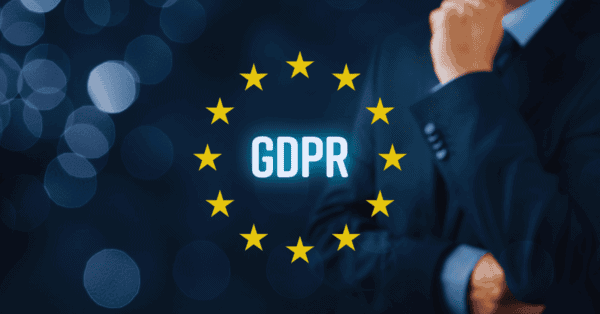By John Patzakis
The European Union (EU) General Data Protection Regulation (GDPR) requires that subject organizations ensure and demonstrate the protection of personal data under their control.

GDPR Article 35 mandates that when implementing new data collection technologies or engaging in a major new project involving significant data collection, an organization must perform a Data Protection Impact Assessment (DPIA).
Recently, a Fortune 500 company with global operations successfully implemented X1 Enterprise to address their eDiscovery and information governance requirements throughout the EU region, involving both Microsoft 365 and on-premises data sources. This implementation required the vetting of X1 Enterprise by auditors and the internal Data Protection Officer through an extensive DPIA process, which X1 passed. The effort provides important industry insights into how our Fortune 500 customer leveraged X1’s unique, on-premises index-in-place and targeted search and collection features, as well as other data minimization capabilities, to meet the DPIA requirements.
The EU provides official guidance and a checklist for conducting an Article 35 DPIA. Among the key requirements is the consideration of the “current state of the technology” in the area and that the technology and collection processes have adequate “proportionality measures” in their collection capabilities to “ensure data minimalisation.” If processes and technology engage in overly broad data collection, the guidance suggests considering alternative technologies and methods.
The team at our Fortune 500 customer emphasized the following unique data minimalization capabilities and features of X1 Enterprise in their DPIA:
- Index and Search Data In-Place. X1’s proprietary micro indexes enable the searching of data on laptops, file servers and Microsoft in-place so that only the potentially relevant data is collected for eDiscovery and data audits, which fulfills the GDPR’s proportionality requirements. In contrast, tools that require full disc imaging for basic eDiscovery collection are extremely problematic.
As the court said in In re Ford Motor Company, 345 F.3d 1315: “[E]xamination of a hard drive inevitably results in the production of massive amounts of irrelevant, and perhaps privileged, information…”
Even worse, the collected data is then re-duplicated, often multiple times, by the examiner for archival purposes. And then the data is sent downstream for processing, which results in even more data duplication. Load files are created for further transfers, which are also duplicated. Notably, EU guidance for a DPIA analysis requires that organizations consider alternative data collection technologies and methods that have better “proportionality measures” to “ensure data minimalization.”
- Blind Searches and User Enabled Review. Using X1 Enterprise, an administrator can run detailed system wide searches and receive a detailed search result report without having access or possession of the target data. Instead, the administrator can direct X1 to first present the search results to the end-user employee to review and apply tags to identify personal, relevant or non-personal data, thereby applying clear and detailed consent to the subsequent collection of any relevant information.
- Segmentation of Data Regions vs. Creation of Central Data Lakes. X1 can be deployed behind an organizations’ firewall or their own private cloud instance in the EU. Each custodian/employee is associated with a single micro-index. This allows X1 to target searches to specific EU counties and segments of users. This contrasts to archiving or other eDiscovery tools that require bulk copying and intermingling of all user data to a central location, where additional back-up copies are made, all which directly run afoul of the data minimalization and proportionality requirements of the GDPR.
- Delete Data In-Place. GDPR requires the deletion of non-compliant on demand. Purging data on managed archives does not suffice if other copies are on laptops, unmanaged servers and other unstructured sources. X1’s on-premises distributed architecture uniquely enables the systematic deleting of data in-place.
- Platform to Enforce GDPR and Privacy Policies. In addition to asserting X1 met the requirements and standards under GDPR mandated DPIA, our Fortune 500 customer noted as further justification in their DPIA that they also planned to utilize X1 Enterprise to enforce privacy policies and provisions under the GDPR. X1 Enterprise is an ideal platform to respond to Data Subject Access requests, proactively audit data sources to identify and remediate personal information, as well as systematically purge unneeded data that may contain personal information of EU data subjects.
Ready to Learn More?
For companies navigating complex information governance and eDiscovery requirements, including those involving M365, the X1 Enterprise Platform ensures compliance while protecting privacy. By implementing X1 Enterprise, organizations can not only reduce costs and save valuable time but also gain a strategic advantage in managing their information governance needs. For a demonstration of the X1 Enterprise Platform, contact us at sales@x1.com. For more details on this innovative solution, please visit www.x1.com/solutions/x1-enterprise-platform.